This is a summary of the wild creatures you might encounter while herping in Okinawa.
The Japanese cave gecko (Goniurosaurus kuroiwae, in Japanese:クロイワトカゲモドキ Kuroiwa tokagemodoki) is endemic to Japan. They have primitive characteristics: such as a lack of scales on their fingers, so they cannot stick to or climb walls; they have eyelids, so they can blink; etc. They come in a variety of colors and patterns, depending on which region and on which island they are found. This is the Goniurosaurus kuroiwae kuroiwae, which is the standard subspecies among the different varieties. It features a prominent red eye with banded patterning on its body.



The Kerama Cave Gecko (Goniurosaurus kuroiwae sengokui, in Jp: ケラマトカゲモドキ Kerama tokagemodoki), a subspecies of the Kuroiwa cave gecko, can only found on a few islands, located two hours by ferry, from the main island of Okinawa. It has a striking orange body, which is noticeable as a difference in the juveniles, right from birth.
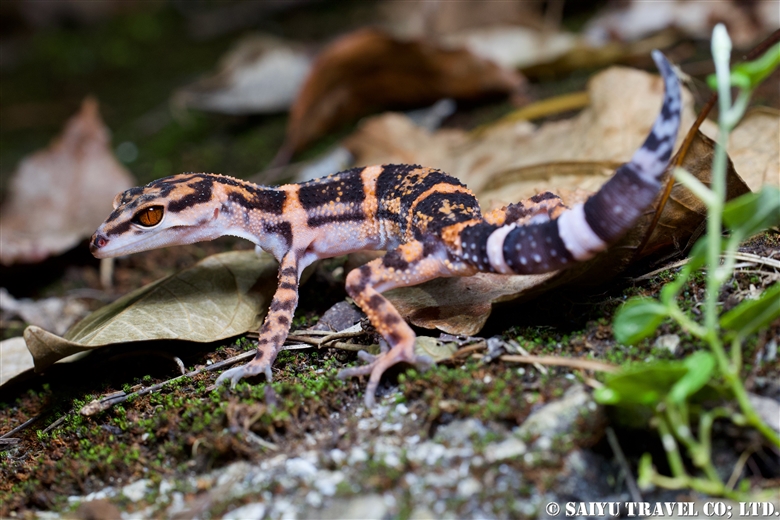
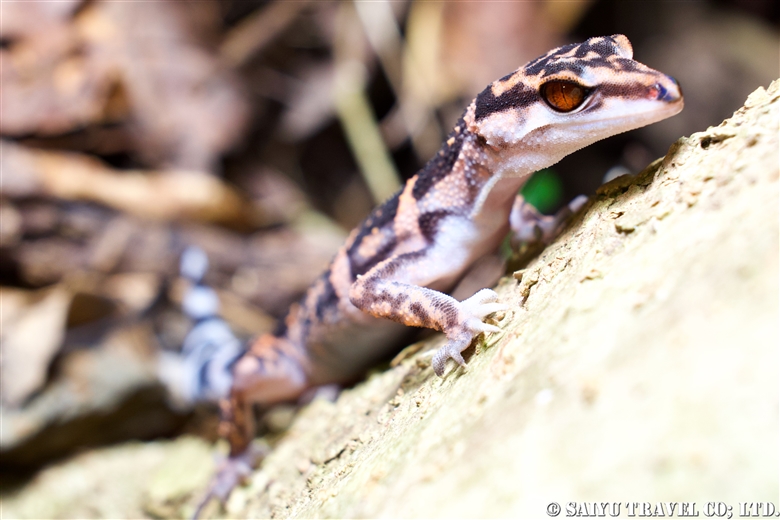
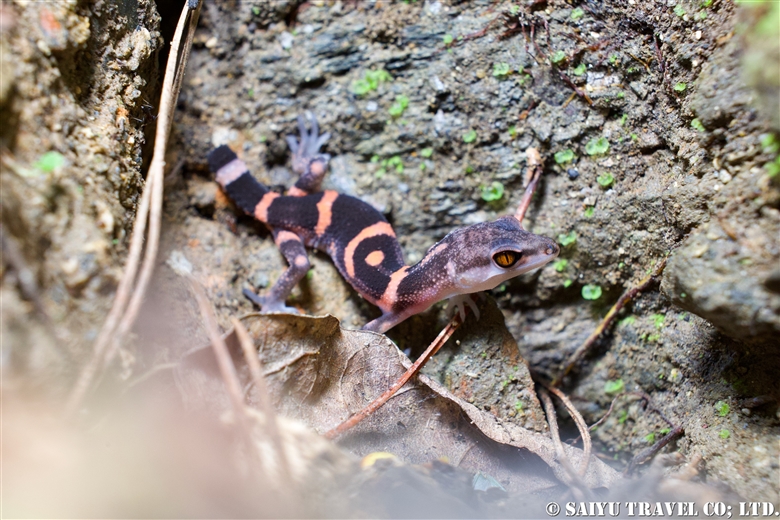
Other gecko species live in Okinawa have various subspecies with different color patterns, depending on the island and the region where they can be found.
The Japanese cave gecko Goniurosaurus kuroiwae kuroiwae ( in Japanese:クロイワトカゲモドキ沖縄本島亜種 Kuroiwa tokagemodoki Okinawa Mainland Subspecies) has red eyes and a striped pattern indicative of the cave geckos. Lives on the southern part of the main island of Okinawa.
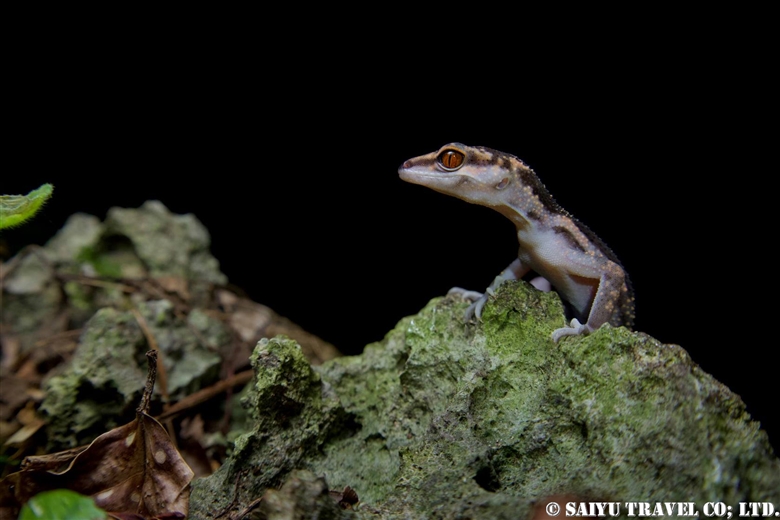
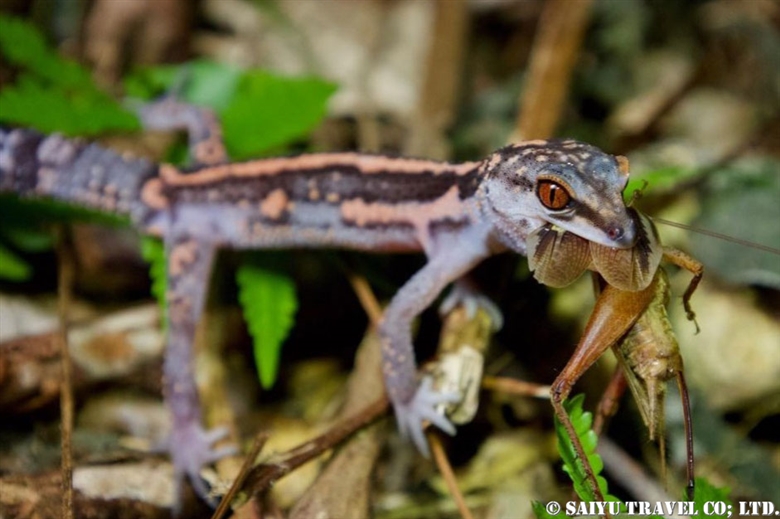
The Kume Cave Gecko Goniurosaurus kuroiwae yamashinae (in Jp: クメトカゲモドキ Kume tokagemodoki) has yellow eyes and a yellow banded coloration.
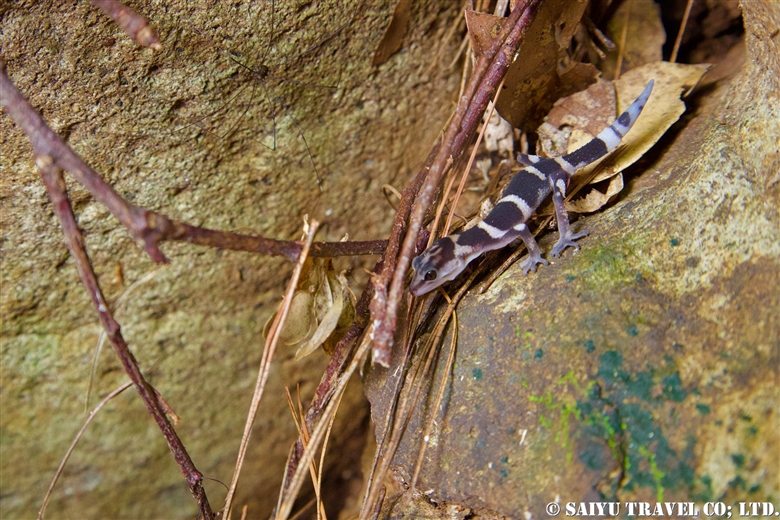
In Okinawa Prefecture, there is a golden colored pit viper that is endemic to the Ryuku Islands, in Japanese called the Habu(ハブ) Protobothrops flavoviridis . Its venom is not very poisonous, but the full length can be rather large at over 2 meters long and solenoglyphous, the fangs for injecting the venom is 1.5 cm. The silver color variation is called a ‘Gin Habu’ meaning ‘Silver Habu’ which is lacking the yellow pigment that is found in the typical Habu.
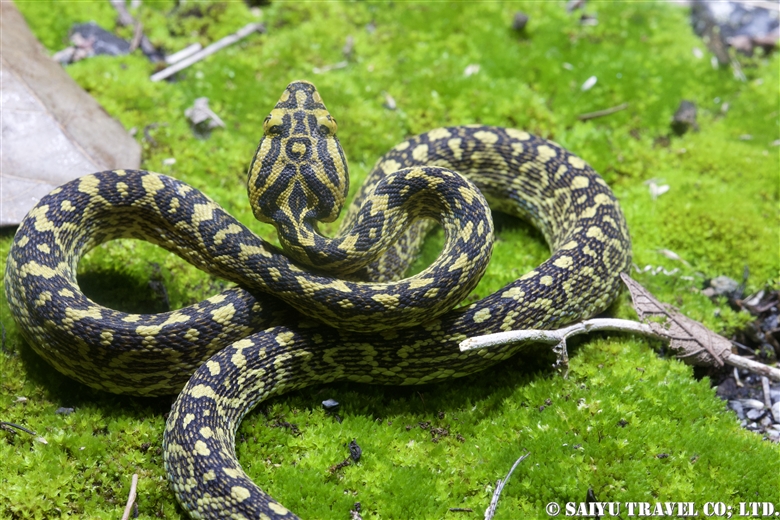
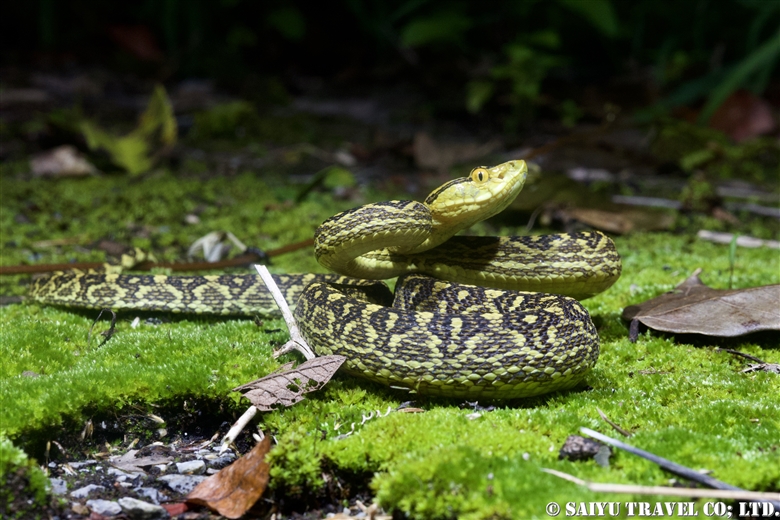
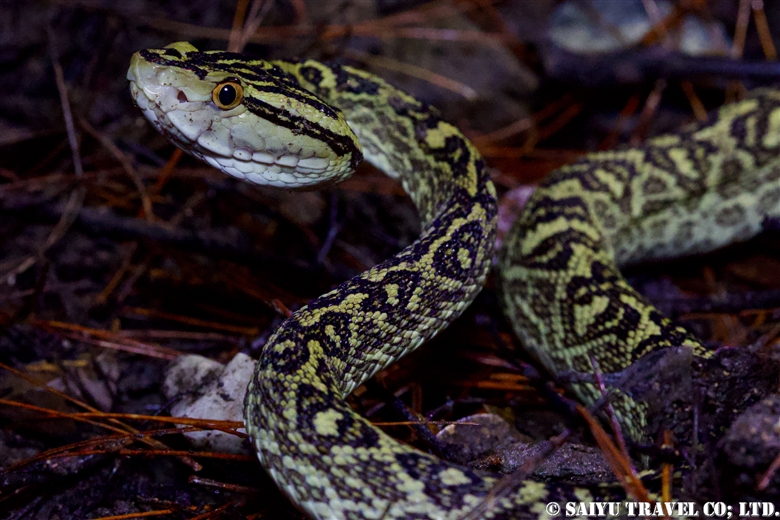
Additionally, there is an endemic Viper in Japanese called the ‘Hime Habu(ヒメハブ)’ (Ovophis okinavensis) which inhabits the same area. Literally, the name means “small habu,” however, even though it belongs to the same family as the Habu, it is a different genus. Frogs being their favorite prey, they can often be observed at the waterside hunting for frogs that are distracted and trying to breed. They stay active even in the winter when other snakes are usually less active.
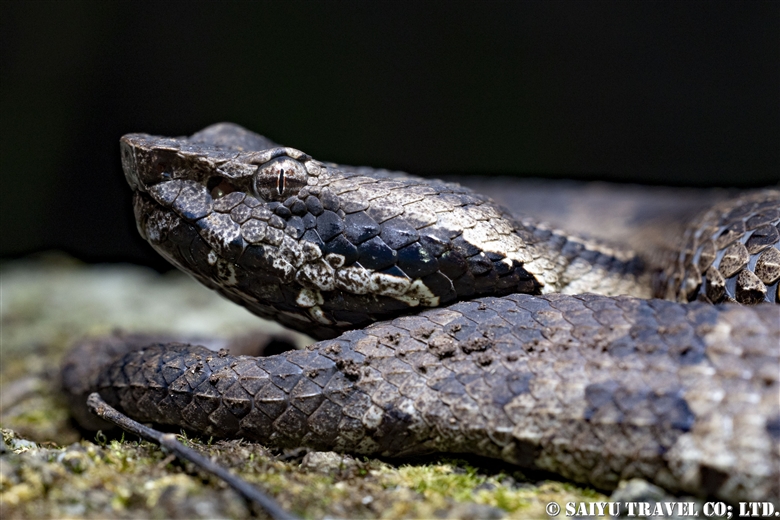
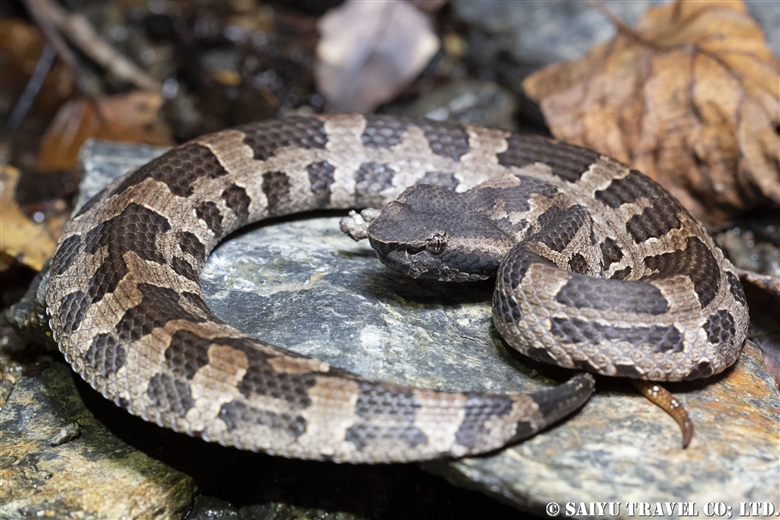
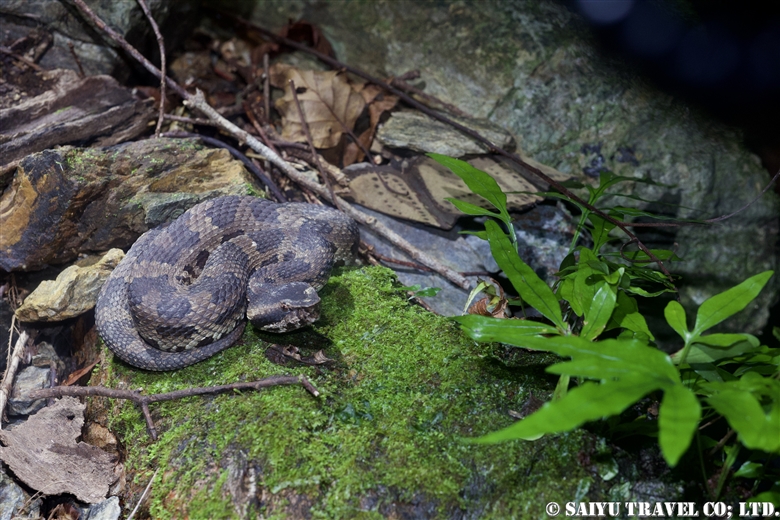
Moreover, in the Yaeyama Island Chain, which are islands located south of the main island of Okinawa, the endemic Sakishima-Habu(サキシマハブ) Protobothrops elegans can be found. In the Sakishima Islands during the summer, one might come across this snake as a given, but you might see an orangish colored snake, that is the same species, but it has lost its dark color. This rare color variation is about one in every 10 snakes. It is a very beautiful snake.
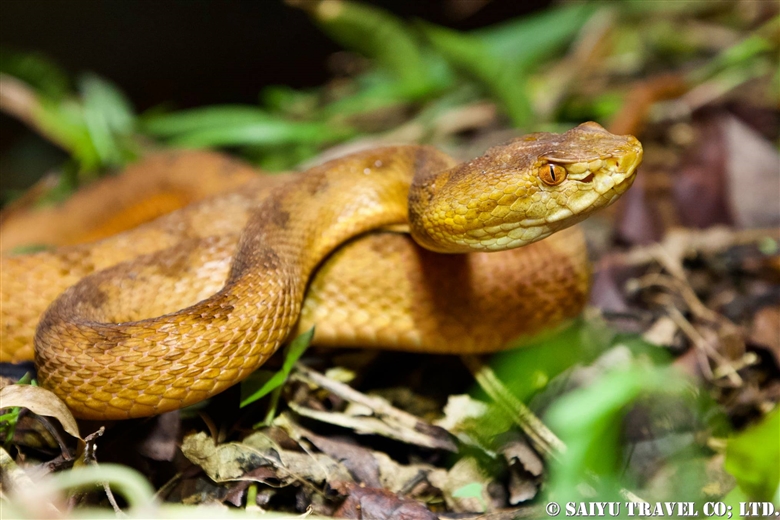
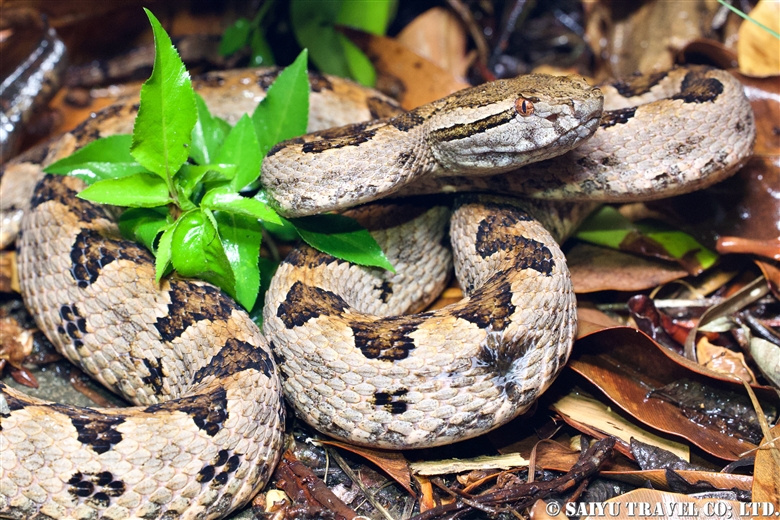
Also, on the main island of Okinawa, there is an extra large snake known as the Ryukyu odd-tooth snake (Lycodon semicarinatus) or in Japanese ‘Akamata(アカマタ),’ which may have a total length exceeding 2 meters. With a voracious appetite, it eats anything including frogs, lizards, mice, and other snakes. It is an endemic species of Japan.
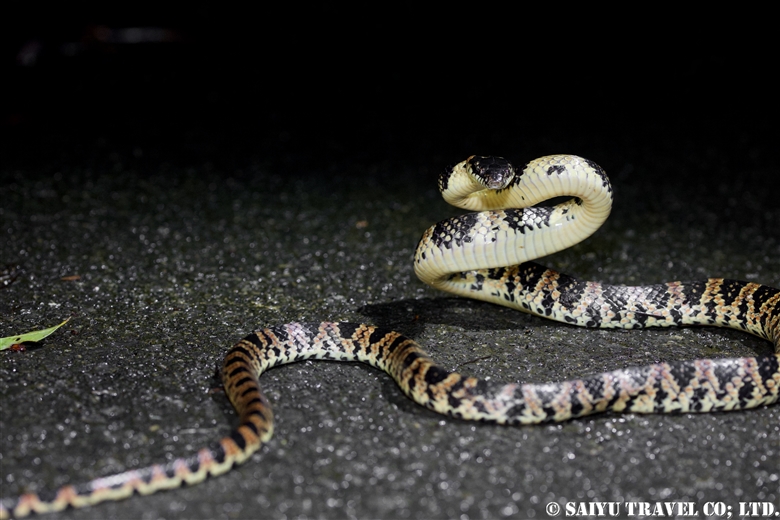
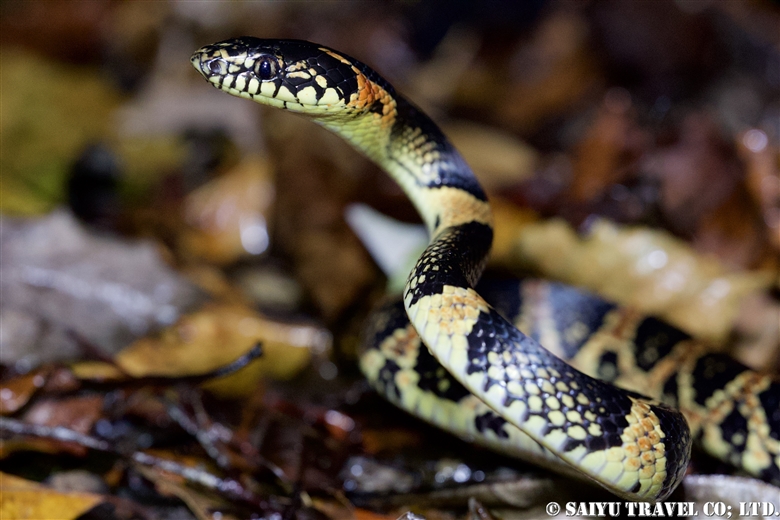
Okinawa’s frogs are also famous.
The most famous frog is the endemic Ishikawa’s Frog (Odorrana ishikawae) or in Japanese ‘Okinawa Ishikawa gaeru(オキナワイシカワガエル).’ With a total length of more than 10 cm it is a relatively large species, however, coming across it in the forest may be difficult because it is usually dispersed in the mountains. In addition, relatively many blue frogs, lacking the yellow pigment have been found, resulting in many people herping in the Yambaru region in search of blue Ishikawa frogs.


Also, in the Yambaru forest, there is a high probability to be able to observe the endemic Ryukyu Tip-nosed Frog (in Jp: Hanasakigaeru(ハナサキガエル). Because they have very long legs, they can quickly evade you, making it quite difficult to photograph. It is very rare, but according to some, the blue variation of these frogs has been found there as well.


Then, there is the endemic Anderson’s Crocodile Newt Echinotriton andersoni, in Japanese Iboimori(イボイモリ), which lives like a reptile. Even though they are amphibians, they aren’t found in or near water, and have strange adaptations like laying their eggs on land.


There are many other beautiful amphibians and reptiles that can be found here, so we hope you can try herping in Okinawa.
Photo & text : Wataru HIMENO( Instagram “Herping Tonight” )
Please contact us, Saiyu Travel Japan for Herping in Japan.
Please check our latest activity : Instagram, Facebook, Youtube
Tags: Herping, Okinawa Herping, Herping in Japan, Willdlife of Japan, Japanese cave gecko, Herping tour in Japan, Reptiles, Endemic Species in Japan, Reptiles in Japan, Amphibians, Amphibians in Japan, ハブ, Habu, ヒメハブ, Himehabu



